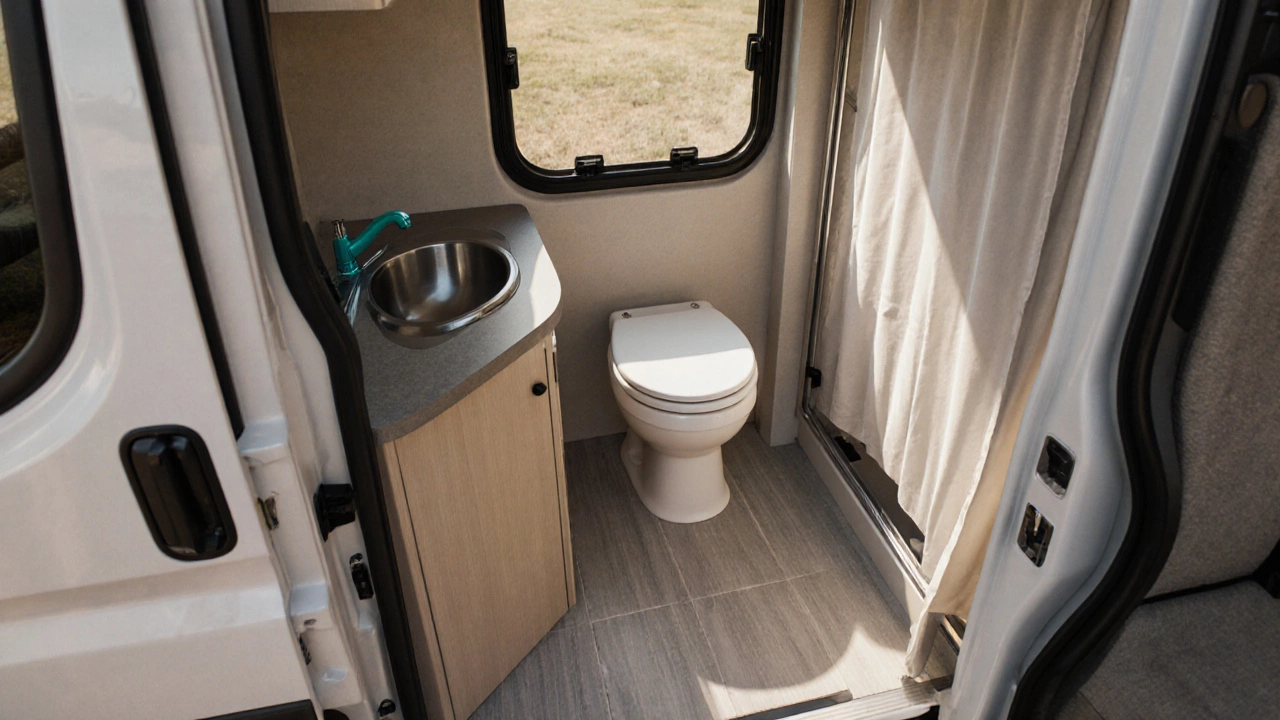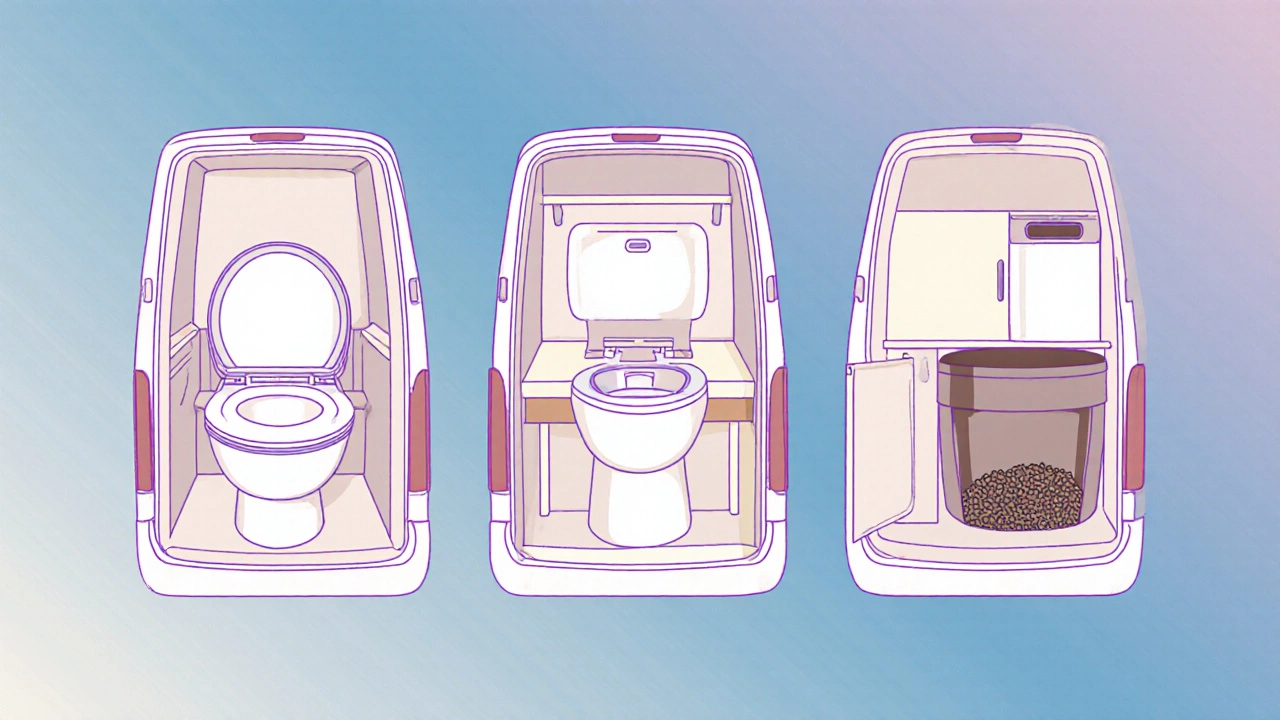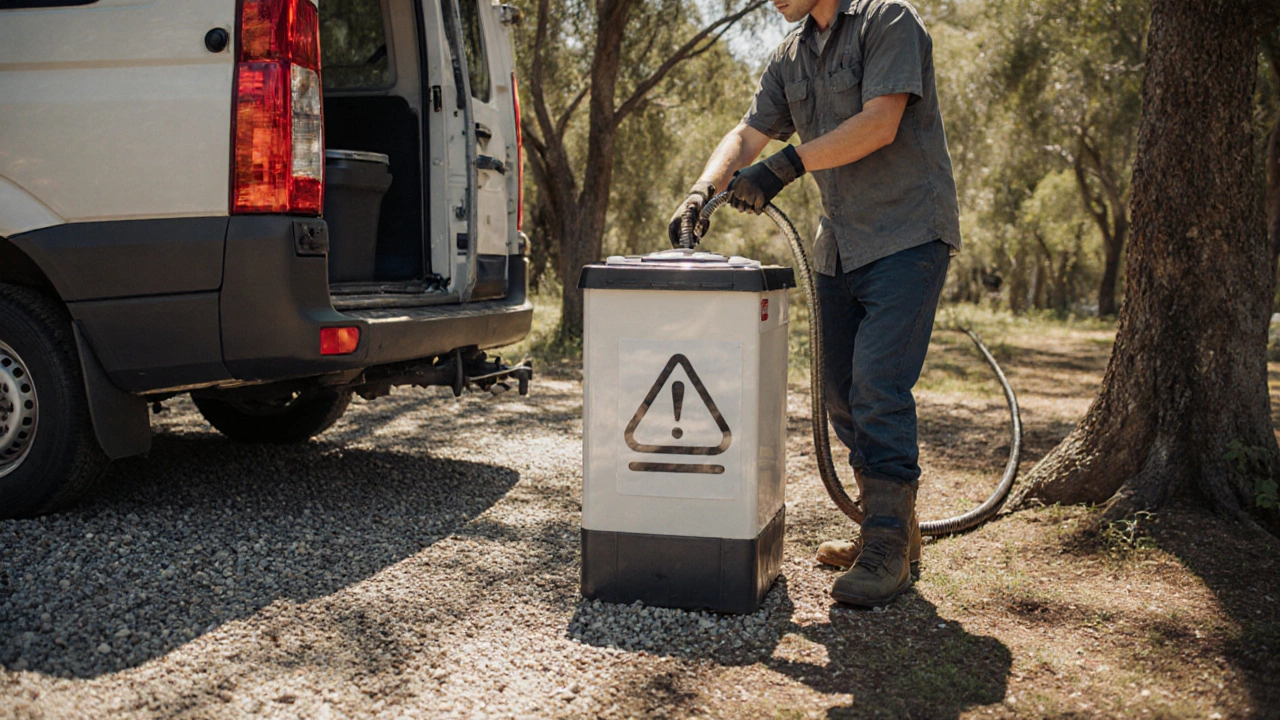Do Class B Motorhomes Include a Toilet? What You Need to Know
 Oct, 12 2025
Oct, 12 2025
Key Takeaways
- Most Class B motorhomes ship with a compact toilet, but the type varies by manufacturer.
- Cassette, portable, and composting toilets are the three main options for these vans.
- Space, weight, and waste‑handling rules are the biggest factors when choosing a toilet.
- Retrofitting a toilet is possible, but it may affect fuel efficiency and insurance.
- Proper maintenance and legal disposal keep you stress‑free on the road.
When you start hunting for a tiny, van‑based recreational vehicle, the first question that pops up is Class B motorhome toilet. You want to know whether you can freshen up on the road without hunting for a public restroom. Below we break down everything you need to decide if a Class B motorhome comes equipped with a toilet, what kind of toilet it is, and how to make the right choice for your travelling style.
What Is a Class B Motorhome?
Class B motorhome is a compact, van‑based recreational vehicle typically under 7 metres long, built on a standard chassis like a Mercedes Sprinter or Ford Transit. Its appeal lies in easy driving, low fuel consumption, and the ability to park in regular sized bays. Because the dimensions are tight, every centimetre counts, especially when it comes to bathroom fixtures.
Do All Class B Motorhomes Have a Toilet?
The short answer: most do, but not every model ships with a built‑in toilet. High‑end manufacturers (e.g., Airstream, Winnebago, Hymer) usually install a compact cassette or portable toilet as standard. Budget‑focused brands might leave the bathroom as a “wet‑room” with only a sink and a shower, expecting owners to add a portable solution later.
When a toilet is included, it’s almost always a space‑saving design rather than a full‑size RV lavatory. That’s why understanding the three common toilet types matters.
Types of Toilets Found in Class B Motorhomes
Below are the three toilet systems you’ll encounter most often:
- Cassette toilet uses a removable waste cassette (usually 9-15L) that you empty at a dump station.
- Portable toilet is a lightweight, self‑contained unit with a small tank that you empty manually into a toilet or dump site.
- Composting toilet breaks down waste using aerobic decomposition, requiring no water and minimal plumbing.

How to Choose the Right Toilet for Your Class B
Consider three variables: space, weight, and waste‑handling logistics.
- Space. Cassette toilets need a built‑in compartment, often about 25cm high and 30cm wide. Portable units can be stored under a bench or in a pantry when not in use. Composting toilets are bulkier and may need a dedicated cabinet.
- Weight. Every kilogram affects fuel economy. Cassette systems add roughly 12-20kg, portable units 8-12kg, while composting models can exceed 30kg.
- Disposal. In Australia, you must empty waste at approved dump stations or caravan parks. Cassette and portable toilets require a hose and a dump point; composting units need a compost bin and a regular empty‑out schedule.
Match these factors to your travel style. If you plan full‑time van life in remote areas, a composting toilet reduces water use and waste‑dump frequency. For weekend getaways where you can rely on campgrounds, a cassette or portable unit is lighter and cheaper.
Retrofitting a Toilet - What You Need to Know
Adding a toilet to a Class B that didn’t come with one is doable but involves several steps:
- Measure the available space. Verify you have at least 30×30cm of clear floor area and a nearby wall for venting.
- Choose a compatible system. Portable units are the easiest to install because they need no permanent plumbing.
- Install a waste tank. Waste tank stores black water from the toilet and can be a separate cassette or a built‑in 20‑L tank. Secure it with brackets and route a hose to the exterior dump outlet.
- Fit a vent pipe. Proper ventilation prevents odors. Most manufacturers recommend a 2‑inch vent that exits near the roof vent.
- Update the insurance policy. Adding a permanent fixture may affect coverage; inform your insurer.
Professional installation is advisable for cassette or composting systems, as improper sealing can lead to leaks and rust.
Maintenance and Legal Disposal
Regardless of the type, keeping the toilet clean and emptying it correctly keeps you and the environment happy.
- Cassette toilets: Use enzyme‑based cleaning tablets after each dump. Empty the cassette at a certified dump station - most Australian caravan parks have a black‑water outlet.
- Portable toilets: Close the lid tightly, add a small amount of deodoriser, and empty the tank into a standard toilet or dump point every 2-3 days of use.
- Composting toilets: Add peat moss or coconut coir after each use to aid decomposition. Empty the compost bin into a garden or a municipal compost facility according to local regulations.
Australian law (referencing Australian Standard AS 2894 covers the design and installation of RV sanitation systems.) mandates that black water cannot be discharged onto public land. Failure to comply can result in fines up to $2,200.

Cost Overview - What to Expect
Below is a quick side‑by‑side comparison of the three main toilet types you’ll find in Class B motorhomes.
| Toilet Type | Typical Size (L×W×H) | Weight (kg) | Water Usage | Cost (AUD) | Pros | Cons |
|---|---|---|---|---|---|---|
| Cassette | 30×30×25cm | 12‑20 | Minimal (no flush water) | 1,200‑1,800 | Compact, easy to dump, reliable | Requires cassette replacement, limited capacity |
| Portable | 35×35×30cm (when stored) | 8‑12 | None (dry or gel chemicals) | 500‑900 | Very cheap, can be removed for extra space | Less stable, may need frequent emptying |
| Composting | 40×40×45cm | 30‑45 | Zero water | 2,500‑4,000 | Eco‑friendly, no dump stations needed | Heavier, needs regular compost management |
Practical Tips for First‑Time Users
- Carry extra cassette or waste bags - you never know when the nearest dump point will be.
- Keep a small bottle of enzyme cleaner handy to prevent buildup.
- Vent the toilet area slightly open while driving to avoid pressure gaps.
- Mark the toilet compartment on any floor‑plan you share with passengers - prevents accidental stepping on the vent pipe.
- When staying at a campground, ask the staff where the black‑water dump outlet is; many sites label it "RV Waste".
Frequently Asked Questions
Do all Class B motorhomes come with a built‑in toilet?
Not all. Luxury models usually include a compact cassette or portable unit, while entry‑level vans may offer a wet‑room only, leaving the toilet as an optional add‑on.
Which toilet type is best for full‑time van life?
A composting toilet often wins for full‑time owners because it eliminates the need for frequent dump‑station visits and uses no water, though it adds weight and requires regular compost management.
Can I install a cassette toilet myself?
DIY installation is possible if you have basic plumbing skills, but you must ensure proper venting and secure mounting to avoid leaks. Many owners prefer a professional fit for warranty reasons.
How often do I need to empty a cassette?
A standard 12‑L cassette lasts about 3‑4 days for a single occupant. Larger 15‑L cassettes can stretch to a week, but always plan to empty at the next approved dump point.
Are there legal penalties for dumping black water illegally?
Yes. Under Australian Standard AS 2894 and local council regulations, dumping black water on public land can incur fines up to $2,200 and may lead to vehicle inspection.